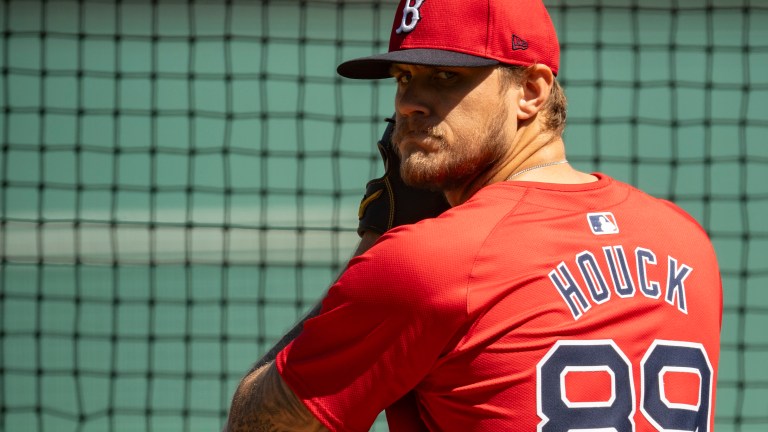Is Tanner Houck on the Verge of a Breakout?
For years now, Red Sox hurler Tanner Houck has been right on the cusp of greatness. Is 2024 the year he finally puts it all together?

One of the biggest surprises thus far in the MLB season has been the early success of the Boston Red Sox rotation, which has been anchored by breakout candidate Tanner Houck. If his early success continues, he may be due for the recognition he has long-deserved.
Houck has been an enigma for the Red Sox organization, and in my opinion one of the most underrated players on the team over the past several seasons. He has never had a FIP over 4.50, and only once had a FIP over 3.50; he has often been the victim of poor Red Sox defense. This year, though, his early success has him poised for a breakout campaign.
Houck has always had elite stuff, and has often been compared to Chris Sale given his unorthodox delivery, wiry frame, and devastating slider – a slider which hitters have never had a batting average against over .210, with a .207 batting average against this year as the highest mark.
Having a career 9.4 K/9 mark and never having a season worse than 8.4 K/9, he is in many ways the perfect modern pitcher. With these numbers, he should have been held in high regard for a long time, but that has not been the case.
Tanner Houck Deserves Some Recognition
Houck made his debut in 2020 as a relatively unheralded prospect who burst onto the scene going 3-0 in his three starts and posting a 0.53 ERA. Since then, he has spent time in the bullpen, earning saves in 2021 and 2022, as well as in the starting rotation as a back-end starter. In 2021, he was famously pulled after throwing 5 perfect innings with a pitch count of just 53. Starts like this show both the potential that Houck has as a starter, as well as his biggest Achilles heel.
In seasons past, the biggest hindrance to Houck becoming a front-line starter has been his numbers against lineups the second and third time through the order. His career ERA his first time through the order is a stifling 1.87, but that jumps to 3.77 the second time through the order, and balloons to 11.57 his third time facing a lineup.
While these numbers are jarring and they do explain why he was pulled from that perfect game bid with his team in a playoff push, I believe the organization was too quick to label Houck as someone that could not face an order multiple times. In fact, he has only thrown a total of 118.2 innings against lineups the second and third times through for his entire career.
A Longer Leash With Instant Benefits
This season, the Red Sox have allowed Houck to work deeper into games, and have been rewarded with better results. Houck has pitched into the sixth inning in all three of his starts this year, and has not allowed an earned run his second time through an order, and just one run his third time through an order.
Houck’s numbers versus left-handed hitters, another perceived weakness, have also improved this season. In years past, he has struggled with his command against left-handed hitters, walking them at almost a 2:1 rate compared to right-handed hitters. However, he is yet to walk a lefty this year, and he has a career-best in strikeout percentage against lefties and FIP against lefties, at 26% and 1.42, respectively.
All of Houck’s numbers on the young season have been spectacular, posting a 2.04 ERA with 19 strikeouts across 17.2 innings pitched. He has allowed just one home run and two walks on the season while posting two quality starts. His breaking ball run value is in the 88th percentile, and his walk percentage, thanks to improved command against left-handed hitters, is in the top 6% of the league.
When looking at the cause of the newfound success, it is due in large part to the abandonment of his four-seam fastball and cutter. Like all Red Sox pitchers, he has essentially wiped fastballs from his arsenal, instead throwing his slider and sinker a combined 79.6% of the time.
Houck’s sinker has a remarkable eight more inches of vertical break than the average MLB sinker, while his slider has an otherworldly nine more inches of horizontal break compared to the league average. In a world of sweepers and long breaking balls, to be that far above average is remarkable.
While it is still early in the season, and Houck’s numbers are likely to regress at least slightly towards his career averages, he clearly has the arsenal needed to be a top-end starter. If he can continue to demonstrate elite command and is given the chance to work deep into games, there is no reason that Houck can’t be the front of the rotation starter the Red Sox desperately need.
